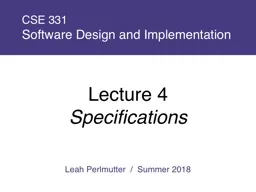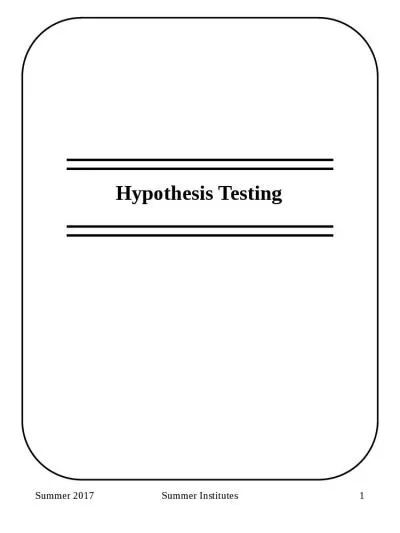PPT-Leah Perlmutter / Summer 2018
Author : frostedikea | Published Date : 2020-06-23
CSE 331 Software Design and Implementation Lecture 4 Specifications Announcements Announcements HW1 Due tonight Looking ahead HW2 and HW3 both due next week Quiz2
Presentation Embed Code
Download Presentation
Download Presentation The PPT/PDF document "Leah Perlmutter / Summer 2018" is the property of its rightful owner. Permission is granted to download and print the materials on this website for personal, non-commercial use only, and to display it on your personal computer provided you do not modify the materials and that you retain all copyright notices contained in the materials. By downloading content from our website, you accept the terms of this agreement.
Leah Perlmutter / Summer 2018: Transcript
Download Rules Of Document
"Leah Perlmutter / Summer 2018"The content belongs to its owner. You may download and print it for personal use, without modification, and keep all copyright notices. By downloading, you agree to these terms.
Related Documents














